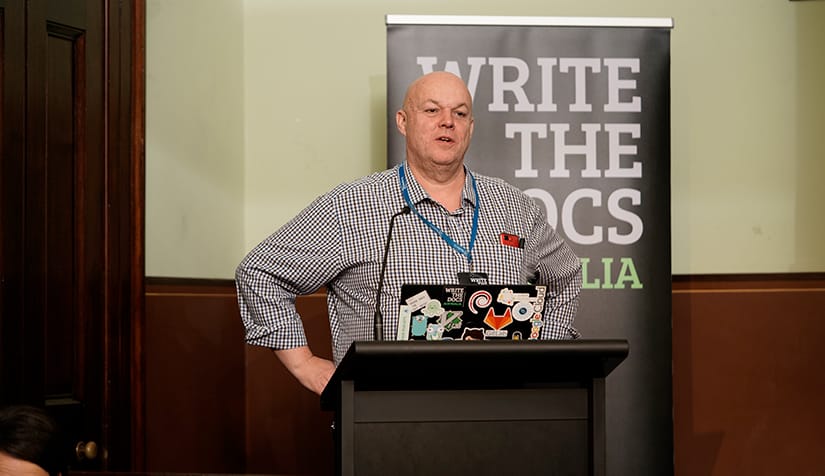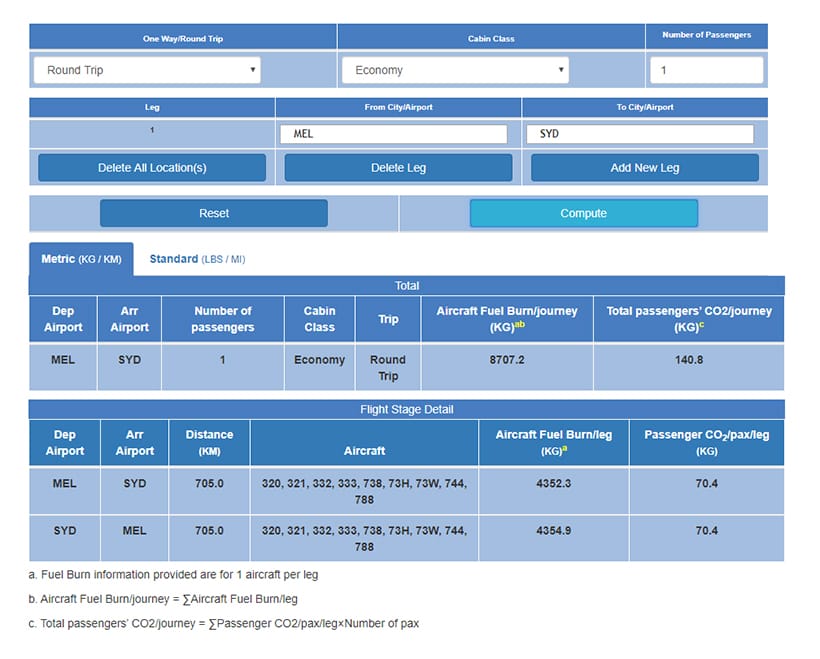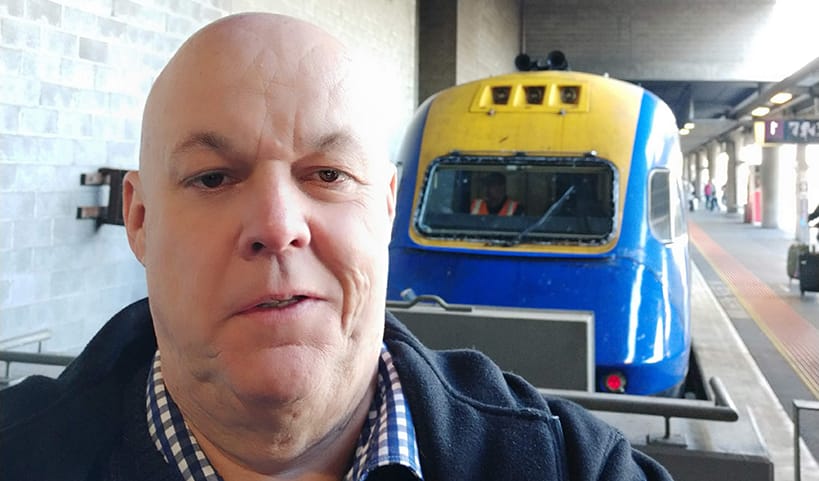This is not your usual PaperCut blog.
This is a story about how one man tried to lower his carbon footprint, armed with nothing but a laptop and a dream…
In November 2019, one of our resident IT geeks, Alec Clews , was invited to speak at the Write the Docs conference in Sydney, Australia. Business as usual. Many a PaperCutter is no stranger to traveling for work. Alec himself attends a few conferences each year (this is all pre-COVID-19 of course).
But this time, there was a twist. Alec had a particular request.
Alec takes the train
Inspired by the activism of Greta Thunberg her “ flygskam ” movement, Alec wanted to reduce his carbon footprint during business travel, and just be nice to the environment in general.
So instead of flying to Sydney, he decided to take the train.
It was going to take a lot longer, but Alec didn’t mind the prospect of working remotely while he chugged along, so PaperCut obliged.
Instead of his carry-on, check-in, and a boarding pass, Alec left the office with his travel bag, an extra-large laptop power bank, and a train ticket tucked in his shirt pocket.
So with his laptop on his seat tray, Alec took off on a merry adventure to Sydney via train.
He quickly discovered why many people don’t take the train.
It’s not fast.
Like, not fast at all.
Wow, shocker, right?
So what happens when you have a bored techie equipped with a laptop who has no access to decent coffee? He makes a mother flipping spreadsheet.

After a business day and a bit’s travel, Alec arrived in Sydney. A bit caffeine-deprived and keen for some breakfast, but all safe and sound nonetheless.

Alec delivering his talk ‘Creating API documentation for international communities’
We all know why we’re here, hit us with the data!
Due to the age of both the train and its tracks, Alec traveled 960 km in 11 hours. That’s an average speed of 87 km per hour. Not as fast as an airplane.
But did he succeed in reducing his carbon footprint? Partially.

Carbon emissions of a flight from Melbourne to Sydney taken from The ICAO Carbon Emissions Calculator
The above figures from ICAO report that the carbon footprint of a flight from Melbourne to Sydney return is 140.8 kg of CO2 per person. The CO2 emissions from Alec’s train trip, according to Engineering Toolbox , were 107 kg.
So theoretically, Alec’s trip saved some CO2 but the numbers are difficult to quantify.
It also wasn’t as big a help to the environment as Alec had hoped because his train ran on diesel.
Even if it had been electric power it would have been difficult to measure if it were entirely “green” because a lot of power generation here in Australia is coal-fired.
But how did Alec find the experience?
Well, he found that if you have work you can do for eight or more hours, that does not depend on continuous internet access, then it’s a good way to be productive with no interruptions.
As a bonus, you get great views out of the windows.
However, if you do most of your work with other people and don’t need hours of uninterrupted time to be productive, the business case for train trips looks tenuous.
If you need to use a laptop you’ll need to prepare – there was no laptop power on the service Alec took. He bought the biggest laptop power bank he could find, which saw him through the whole trip.
The good news is that NSW Railways are promising us better trains soon – in 2023 at the earliest.
In terms of the ride itself, the rolling stock was so old and noisy that taking the night service on the return journey was not a great experience (although his bunkmate said he slept like a baby).
It also seems unlikely many people would happily turn up for a day’s business after 11 hours on a sleeper train.
The more serious issue is that if you want to go further than Sydney for work then the train is no longer realistic.
Alec more recently went to the Gold Coast to speak at another conference (again, pre-COVID-19), and the train trip would have taken 27 hours, so he had to fly.
So what’s there to learn?
Other than the fact that Alec’s spreadsheet skills are not to be trifled with?
Well, it’s an interesting example of how fighting against climate change is a bit of a rigged game.
Sure, there are ways you can reduce your carbon footprint, but as a practice, they themselves can be unsustainable in the long run.
But Alec’s trip serves as an example of how environmentalism starts with us.
Right now, due to COVID-19, all conferences are remote, so they’re green by default. In the words of our CEO Chris Dance , let’s try not to lose that.
When we’re finally out of lockdown, whether it’s attending conferences virtually via Google Hangouts or sitting next to Alec with his laptop power bank on the train, if you can, seek alternate and greener options for your next business trip.
Maybe if enough of us do that we may get quicker and more environmentally friendly options. Either that or we continue to hold our breath before the Holy Grail that is the high-speed rail (that rhyme though) pulls in at the local train station.


